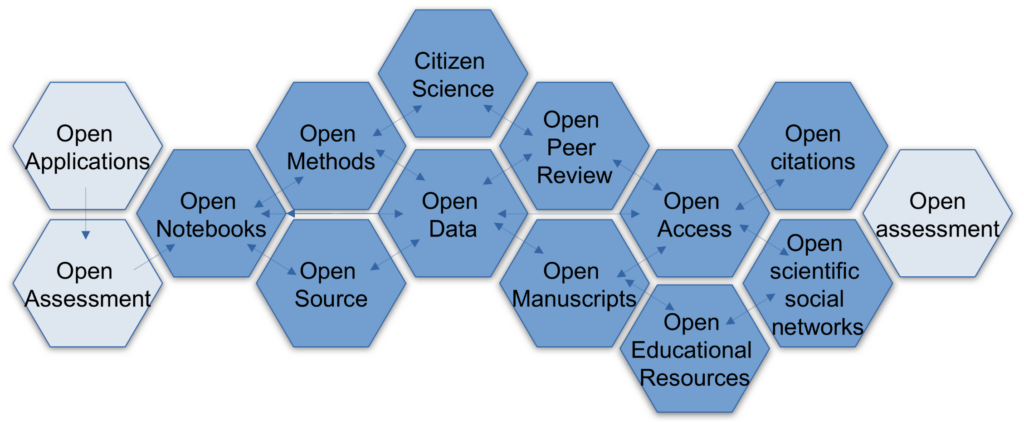Earlier today, I presented at the national open research conference Hvordan endres forskningshverdagen når åpen forskning blir den nye normalen? The conference is organized by the Norwegian Forum for Open Research and is coordinated by Universities Norway. It has been great to follow the various discussions at the conference. One observation is that very few questions the transition to Open Research. We have, finally, come to a point where openness is the new normal. Instead, the discussions have focused on how we can move forwards. Having many active researchers in the panels also led to focus on solutions instead of policy.
Openness leads to better research
In my presentation, I began by explaining why I believe opening the research process leads to better research:
- Opening the process makes the researcher more carefully document everything. For example, nobody wants to make messy data or code available. Adding metadata and descriptions also help improve the quality of what is made available. It also helps in removing irrelevant content.
- Making the different parts openly available is important for ensuring transparency in the research process. This allows reviewers (and others) to check claims in published papers. It also allows for others to replicate results or use data and methods in other research.
- This openness and accessibility will ultimately lead to better quality control. Some people complain that we make available lots of irrelevant information. True, not everything that is made available will be checked or used. The same is the case for most other things on the web. That does not mean that nobody will never be interested. We also need to remember that research is a slow activity. It may take years for research results to be used.
Of course, we face many challenges when trying to work openly. As I have described previously, we particularly struggle with privacy and copyright issues. We also don’t have the technical solutions we need. That led me to my main point in the talk.
Connecting the blocks
The main argument in my presentation was that we need to think about connecting the various blocks in the Open Research puzzle. There has, over the last few years, been a lot of focus on individual blocks. First, making publications openly available (Open Access). Nowadays, there is a lot of discussion about Open Data and how to make data FAIR (Findable, Accessible, Interoperable, Reusable). There is also some development in the other building blocks. What is lacking today is a focus on how the different blocks are connected.

By developing individual blocks without thinking sufficiently about their interconnectedness, I fear that we lose out on some of the main points of opening everything. Moving towards Open Research is not only about making things open; it is about rethinking the way we research. That is the idea of the concept of Science 2.0 (or Research 2.0, as I would prefer to call it).
There is much to do before we can properly connect the blocks. But some elements are essential:
- Persistent identifiers (PID): Having unique and permanent digital references that makes it possible to find and reuse digital material is essential for finding this. This could be DOIs for data, ORCID for researchers, and so on.
- Timestamping: Many researchers are concerned about who did something first. For example, many people wait with releasing their data because they want to publish an article first. That is because the data (currently) does not have any “value” in itself. In my thinking, if data had PIDs and timestamping they would also be citable. This should also be combined with proper recognition of such contributions.
- Version control: It has been common to archive various research results when the research is done. This is based on pre-digital workflows. Today, it is much better to provide solutions for proper version control of everything we are doing.
Fortunately, things move in the right direction. It is great to see more researchers try to work openly. That also exposes the current “holes” in infrastructures and policies.